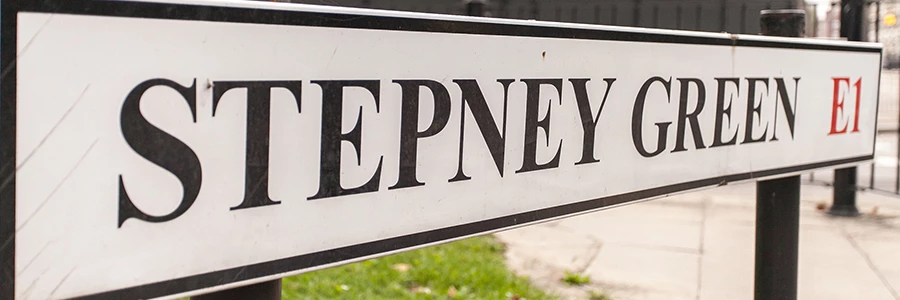Get an instant valuation here or contact one of our offices


Stepney is part of the London Borough of Tower Hamlets and is ideally placed in relation to the City to the West, Mile End to the East, Limehouse to South and Bethnal Green to the North. Stepney evolved from medieval village around St Dunstan's church and the 15th century ribbon development of Mile End Road. The area grew dramatically during the 19th century due to an influx in migrant workers and poverty stricken Londoners. Largely avoided by the upper and middle classes, Stepney's reputation was unsavoury to say the least, known for its overcrowding, violence and street crime.
Stepney was badly damaged during the blitz of the second world war with over a third of its buildings destroyed. The rebuilding process began in the 1960's and along with slum clearance, came the emergence of local authority estates and high rise tower blocks that are now synonymous in the area. Georgian and Victorian terraced houses do still remain with notable concentrations around Arbour Square, Stepney Green, Carlton Square and St Peters conservation areas.
Attracted by East London's modest property prices, immigrants have contributed to Stepney's history over the centuries, from the Huguenots in the 17th century, the Irish in the 18th Century, Ashkenazi Jews fleeing in Eastern Europe towards the end of the 19th century and Bangladeshi community which settled in the 60's.
Stepney City Farm is one of the areas main attractions, a four acre working/petting farm and art rural arts centre which makes for a great family day out. They give children and adults a chance to meet farm animals, learn how to grow food and try out arts and crafts.
Brush up on your history by visiting the Parish Church of St Dunstan, there has been a church on the site for 1000 years and is the focal point of the community. Whilst the exact date is unclear, there was a wooden structure here built sometime between 500 and 952. This was in turn replaced by a stone building which was built by St. Dunstan, for whom it is named. In the 16th century, one of the Deans here, John colet, was well regarded in the field of scholarship which ultimately led to the Reformation.
Take the'Jack The Ripper' walking tour. Follow the ripper’s footsteps by visiting the scenes of each murder, with indepth knowledge from an enthusiast guide along the way. The tour incorporates Stepney, Whitechapel and Aldgate.
508 Roman Road
Bow
London
E3 5LU
020 8102 1236
london@butlerandstag.com
Like most of London's East End, Stepney was sparsely populated marshland until the 19th century. Slum clearance along with development of London's railways, forced the immigrants and poor into cheaper housing being built. The first notable community formed around St Dunstans church, which dates back to 923. Records show that its name was recorded around 1000 AD as Stybbanhyð, "Stybba's landing-place". The Domesday Book survey of 1086 gives the name as Stibanhede and says that the land was held by the Bishop of London and was 32 hides large, mainly used for ploughing, meadows, woodland for 500 pigs, and 4 mills. There were over 100 serfs, split between villeins who ploughed the land, and cottars who assisted the villeins in return for a hut or cottage.
The Manor of Stepney was held by the Bishop of London in compensation for his duties in maintaining and garrisoning the Tower of London. Further ecclesiastic holdings came about from the need to enclose the marshes and create flood defences along the Thames. Edward VI passed the land to the Wentworth family, and thence to their descendants, the Earls of Cleveland. The ecclesiastic system of copyhold, whereby land was leased to tenants for terms as short as seven years, prevailed throughout the manor. This severely limited scope for improvement of the land and new building until the estate was broken up in the 19th century.
In the early 20th century, Stepney was one of the most Jewish neighbourhoods in England; it was eventually replaced by Stamford Hill.

“ The service provided by the entire team at Butler and Stag is fantastic. From purchasing a plot, to the sale of the properties was run fantastically. Very professional outfit and a pleasure to work with. We certainly will be using Butler and Stag again in the near future. ”
Read more reviews